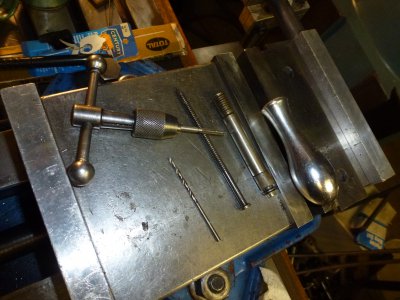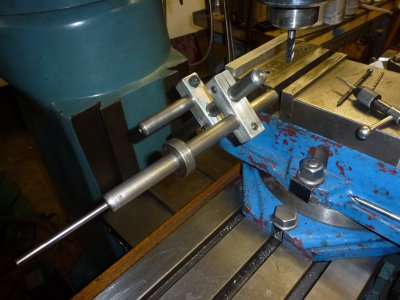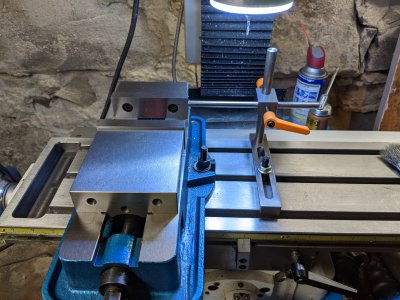- Joined
- Dec 18, 2019
- Messages
- 6,463
Have a piece of metal I'd like to mill that's a little large for my vise. Looking at the vise, I see that the jaws can be removed and put on the other side of the moving jaw. (Other side of stationary jaw as well, don't need the added grip range.) Moving the jaw would allow enough travel to capture the part.
Are there any things I need to watch out for? Like needing to align the jaws in X and Z? As delivered, the jaws close together amazingly well, one can't tell where the parting line is when the jaws are closed. Is there a preferred orientation of the jaw face? Any tips or just forge ahead? When the machining is done and the jaw is moved back to its original place, how can you get similar alignment? Just tapping with a hammer until good? What are reasonable expectations for how close one can realign the jaws?
This is just a mid/low range import vise, not a Kurt or Glacern. I'm just trying to get an idea if I'll ever get the nice alignment back if I move the jaws. If there's a high probability that the alignment will be poor, I'll look into a different way of doing things. So far the vise has been ok and I'd like to keep it that way.
Sorry to clutter the forum for this extremely basic question, but thought it better to ask now rather than in a panic later. Thanks all.
Are there any things I need to watch out for? Like needing to align the jaws in X and Z? As delivered, the jaws close together amazingly well, one can't tell where the parting line is when the jaws are closed. Is there a preferred orientation of the jaw face? Any tips or just forge ahead? When the machining is done and the jaw is moved back to its original place, how can you get similar alignment? Just tapping with a hammer until good? What are reasonable expectations for how close one can realign the jaws?
This is just a mid/low range import vise, not a Kurt or Glacern. I'm just trying to get an idea if I'll ever get the nice alignment back if I move the jaws. If there's a high probability that the alignment will be poor, I'll look into a different way of doing things. So far the vise has been ok and I'd like to keep it that way.
Sorry to clutter the forum for this extremely basic question, but thought it better to ask now rather than in a panic later. Thanks all.





 Let the chips fly!
Let the chips fly!